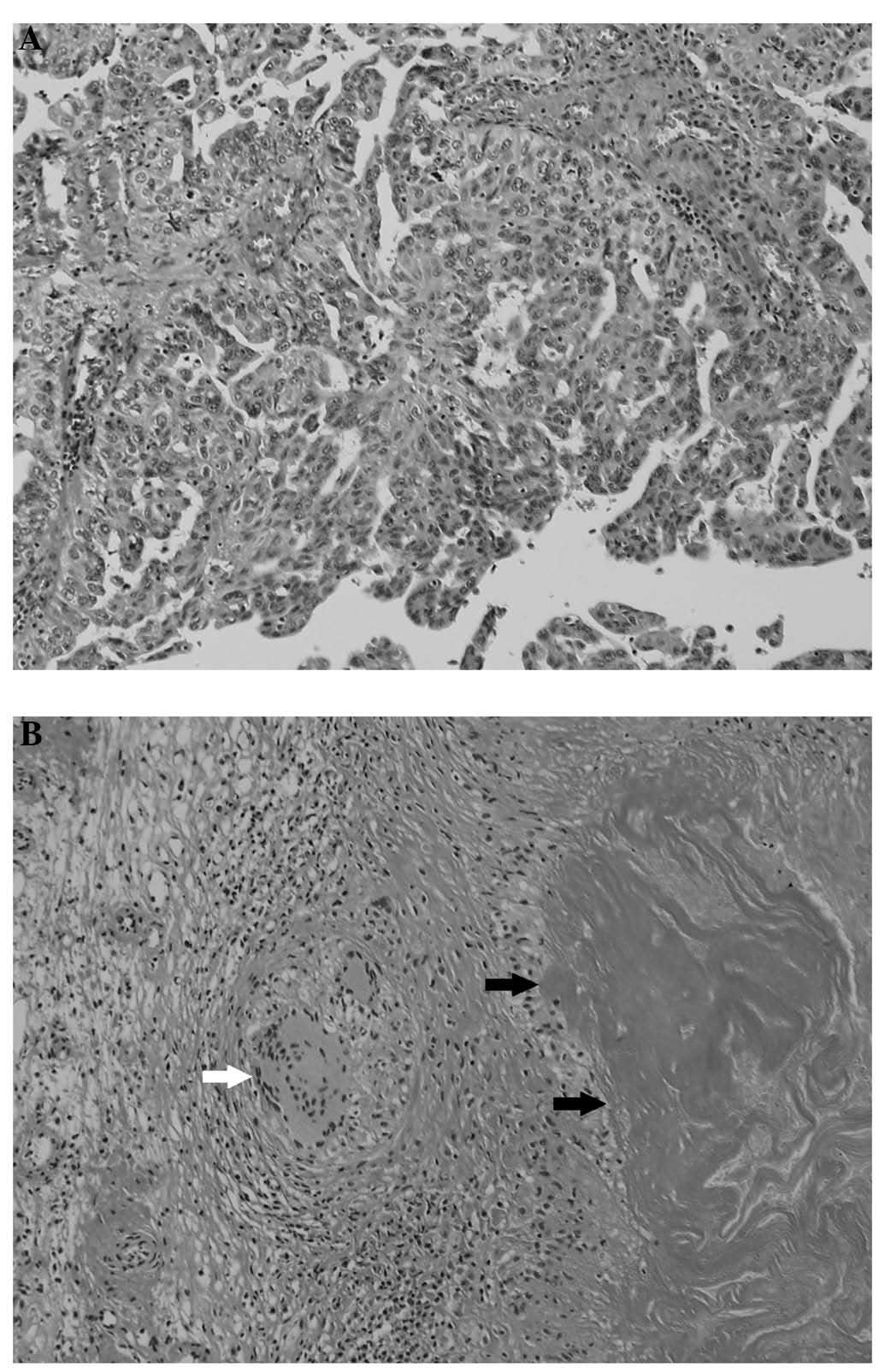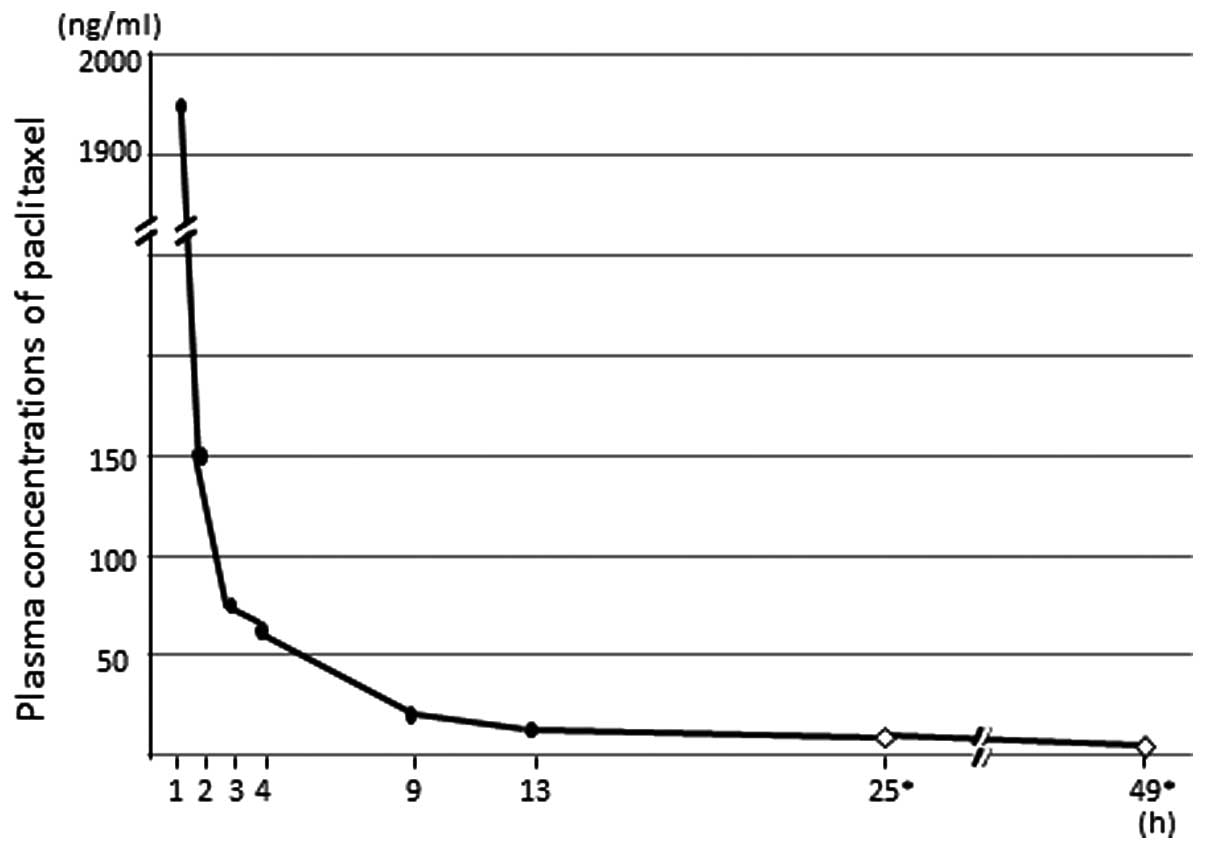Treatment of advanced ovarian carcinoma coexistent with peritoneal tuberculosis
- Authors:
- Published online on: September 12, 2013 https://doi.org/10.3892/mco.2013.183
- Pages: 1084-1086
Metrics: Total
Views: 0 (Spandidos Publications: | PMC Statistics: )
Total PDF Downloads: 0 (Spandidos Publications: | PMC Statistics: )
Abstract
Primary ovarian carcinoma is often chemosensitive. therefore, aggressive treatment is recommended for patients with ovarian carcinoma. Peritoneal tuberculosis is rare and may present with symptoms similar to those of advanced ovarian carcinoma. To the best of our knowledge, this is the first report of a case of primary advanced ovarian carcinoma coexistent with peritoneal tuberculosis. The patient had undergone three courses of neoadjuvant chemotherapy with tri‑weekly paclitaxel and carboplatin (TC), followed by total abdominal hysterectomy, bilateral salpingo‑oophorectomy, omentectomy and pelvic and para‑aortic lymphadenectomy. The postoperative pathological examination confirmed the diagnosis of ovarian serous papillary adenocarcinoma coexistent with peritoneal tuberculosis. The patient was started on antituberculous chemotherapy, followed 2 weeks later by four courses of antitumor chemotherapy with weekly TC. the plasma concentration of paclitaxel was measured after the first administration of TC. We considered that rifampicin may enhance the metabolism of paclitaxel, causing the plasma concentration of paclitaxel to decrease. therefore, rifampicin administration was discontinued on days 1, 8 and 15. The patient completed the antitumor and antituberculous chemotherapy and has remained alive and recurrence‑free for 5‑years. Although rifampicin may enhance the metabolism of paclitaxel, we suggest that it may be possible to administer concurrent antituberculous and antitumor chemotherapy under close observation.











